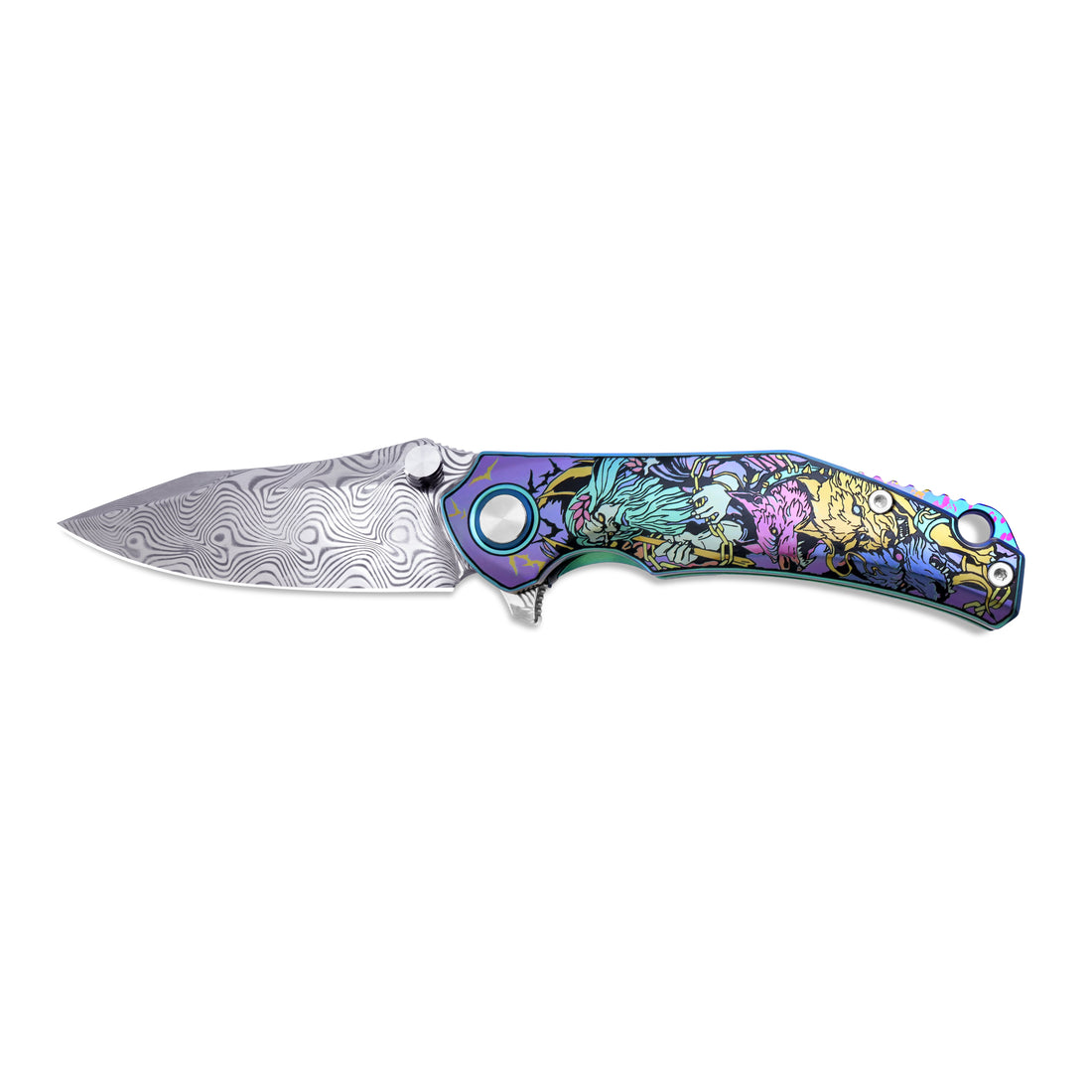
The Heart of a Folding Knife: Unveiling the Pros and Cons of 5 Common Blade Materials
When selecting a folding knife, the blade material is a key factor determining its performance and price. No single material is perfect; each represents a trade-off between hardness, toughness, corrosion resistance, and ease of sharpening. Here are five common blade materials for folding knives:
1. 440C Stainless Steel - The Timeless Classic
-
Characteristics: A historic high-carbon stainless steel known for its excellent corrosion resistance (rust resistance).
-
Pros: Cost-effective, very rust-resistant, easy to sharpen.
-
Cons: Relatively poor edge retention (how long it stays sharp), requires more frequent sharpening. Hardness is slightly insufficient for heavy-duty use.
-
Best For: Light tasks for Everyday Carry (EDC), diving knives, entry-level or vintage-style folding knives.
2. AUS-8 Stainless Steel - The Japanese Balanced Choice
-
Characteristics: A mid-to-high-end stainless steel produced in Japan, known for its balanced performance.
-
Pros: Offers good toughness (resistance to chipping), decent corrosion resistance, and good sharpenability. It strikes an excellent balance between hardness, toughness, and rust resistance.
-
Cons: Edge retention is better than 440C but still falls short of more advanced powder steels.
-
Best For: An excellent "all-rounder" steel, suitable for general-purpose daily folding knives that meet most cutting tasks.
3. 8Cr13MoV - China's King of Value
-
Characteristics: With a chemical composition similar to AUS-8, this is a widely used steel produced in China.
-
Pros: Very affordable, while offering good overall performance: easy to sharpen, with decent toughness and acceptable corrosion resistance.
-
Cons: Average edge retention, on par with or slightly lower than AUS-8.
-
Best For: Often used in entry-level and budget-friendly knives from well-known brands (e.g., Spyderco's Byrd series). A great choice for beginners.
4. D2 Tool Steel - The "Semi-Stainless" Hardened Steel
-
Characteristics: D2 is a high-carbon, high-chromium tool steel highly regarded for its extreme hardness and outstanding edge retention.
-
Pros: Exceptional edge retention, very wear-resistant.
-
Cons: Its chromium content is insufficient to be classified as "fully stainless," so it may rust in humid environments and requires more maintenance. It is also relatively difficult to sharpen.
-
Best For: Folding knives intended for heavy-duty tasks requiring long-lasting sharpness, for users willing to invest more effort in maintenance.
5. CPM-S30V - The Star of Modern Powder Metallurgy
-
Characteristics: Manufactured by Crucible Industries in the USA using the Particle Metallurgy (CPM) process, representing a leap forward in modern knife steel technology.
-
Pros: Achieves high levels of edge retention, hardness, and corrosion resistance simultaneously, with good toughness. It was designed to eliminate the trade-offs of traditional steels.
-
Cons: Expensive, can be challenging for beginners to sharpen.
-
Best For: The preferred material for professional-grade, high-end folding knives, suited for users seeking ultimate performance, collectors, and outdoor enthusiasts.
How to Choose?
-
Daily Use: AUS-8 or 8Cr13MoV offer the best balance.
-
Heavy-Duty Outdoor Use: D2 or CPM-S30V provide longer-lasting sharpness.
-
Coastal/Humid Environments: Prioritize 440C or CPM-S30V for enhanced rust resistance.
-
Budget & Easy Maintenance: 440C and 8Cr13MoV are economical and easy to sharpen yourself.